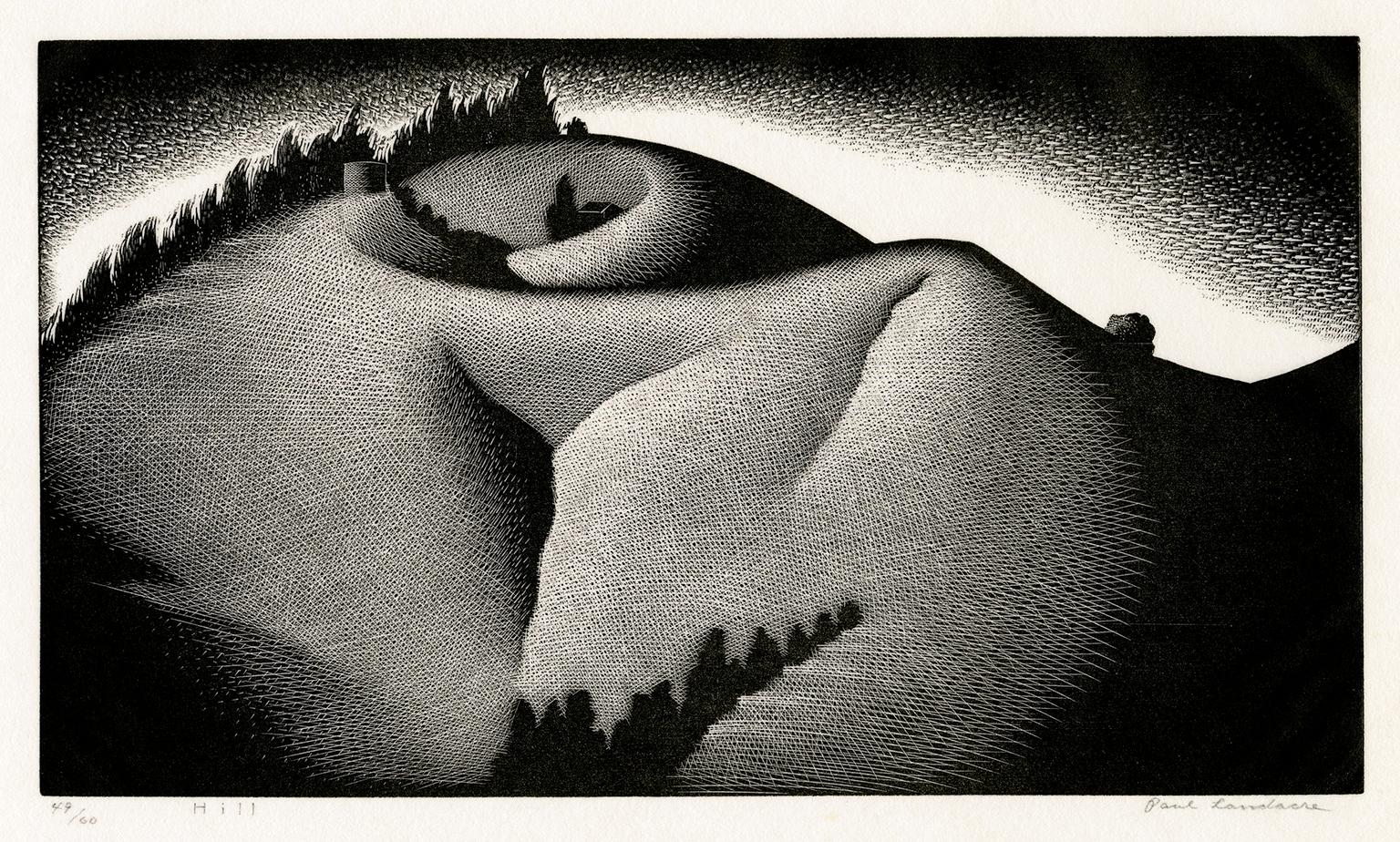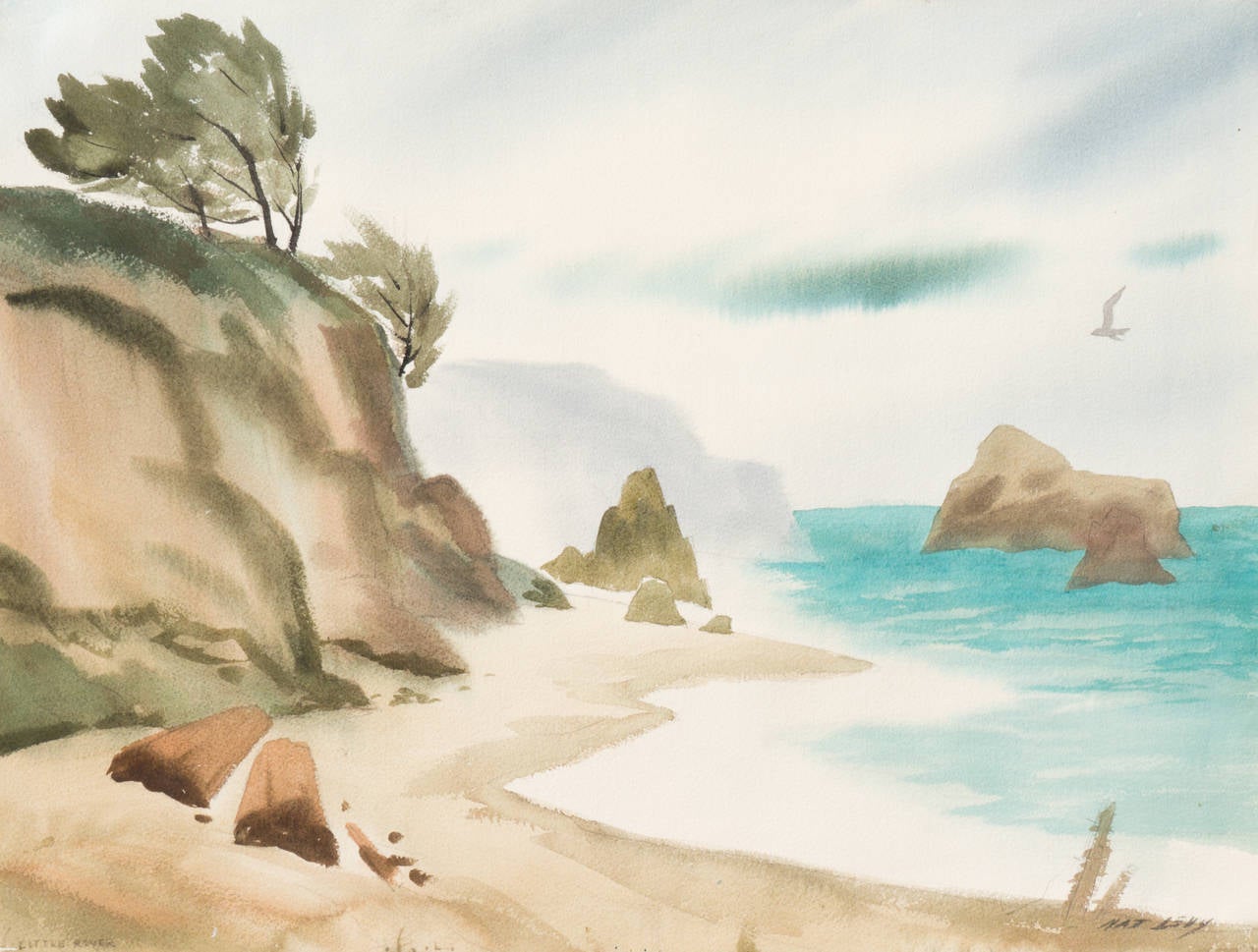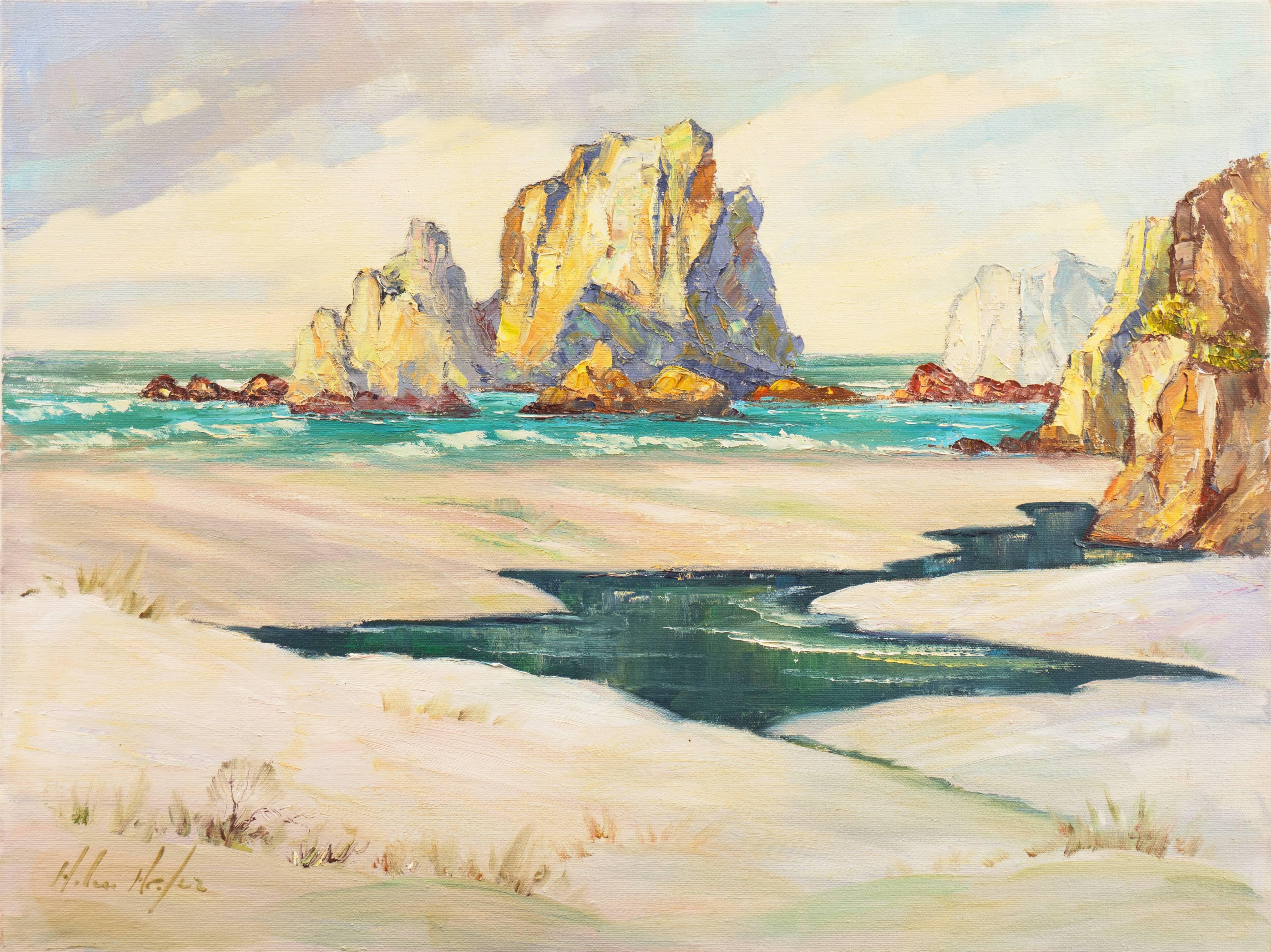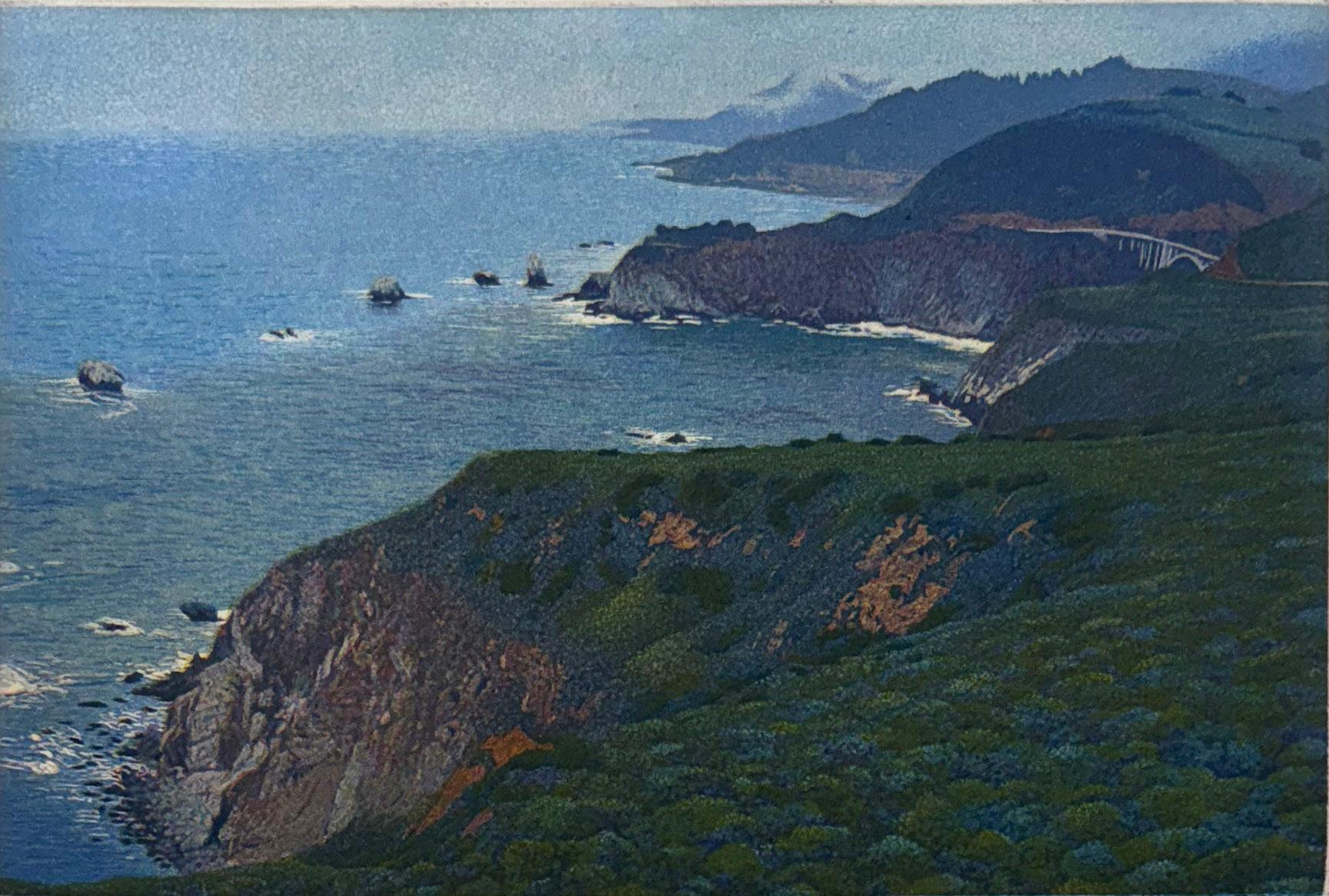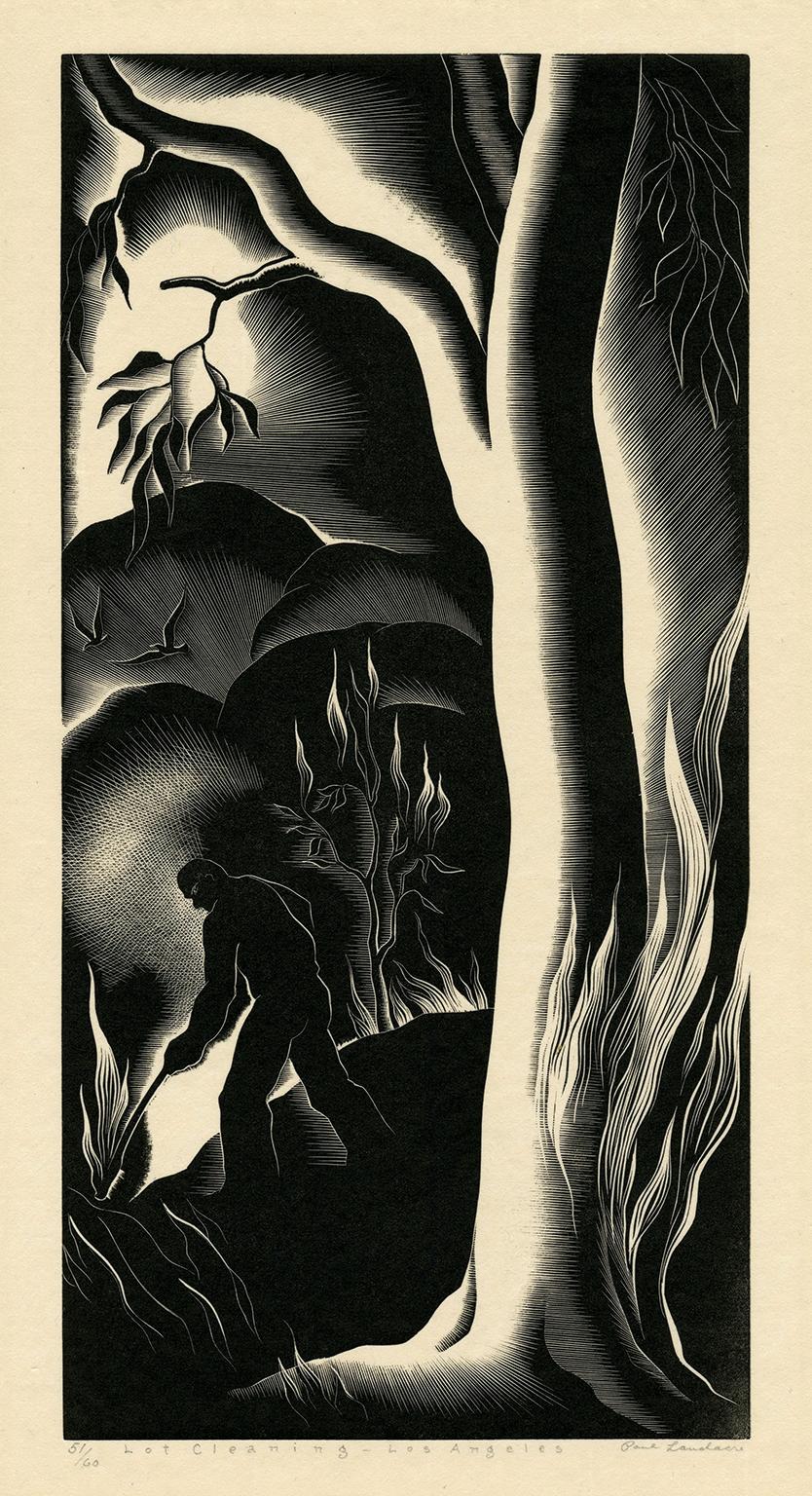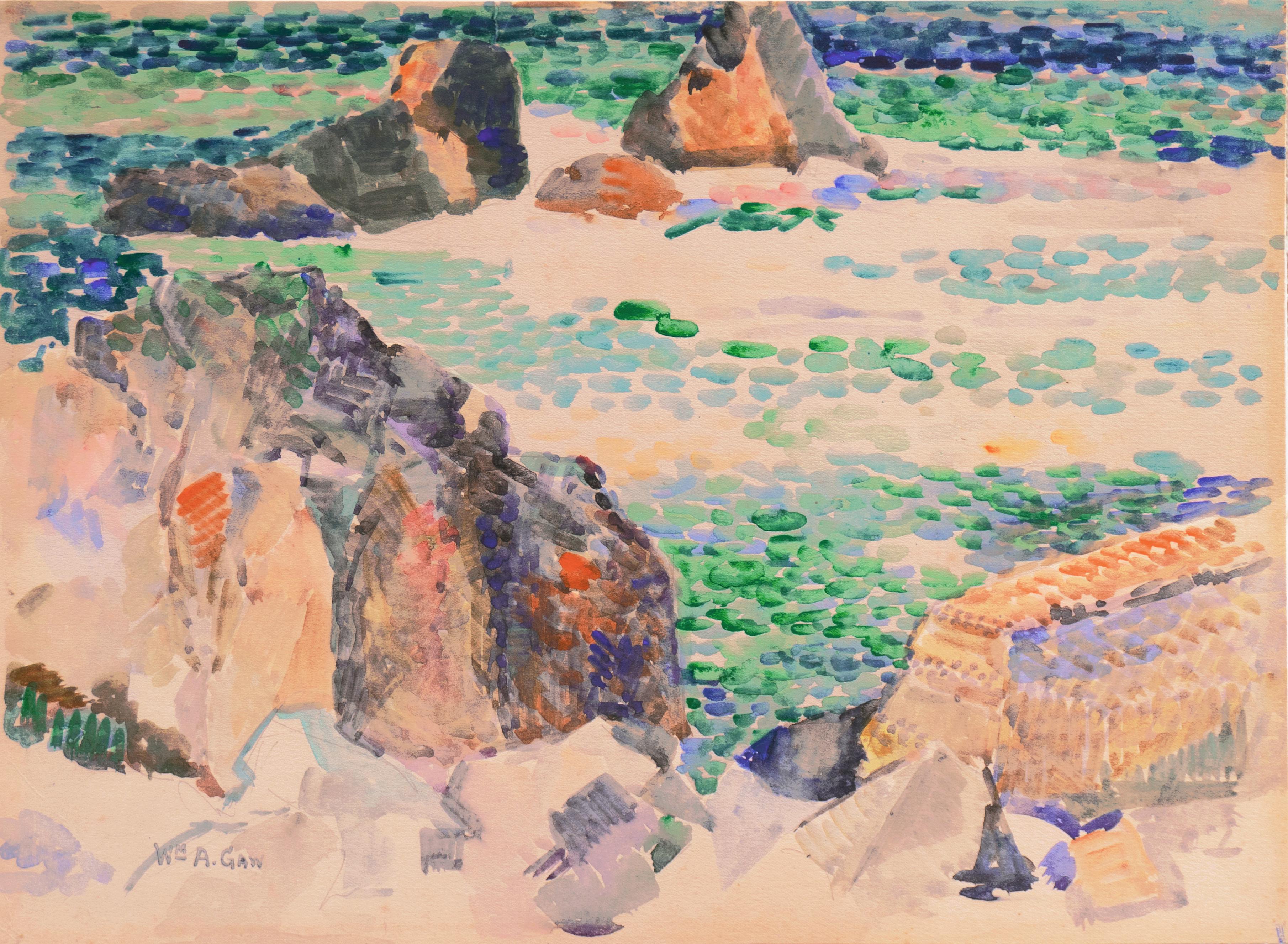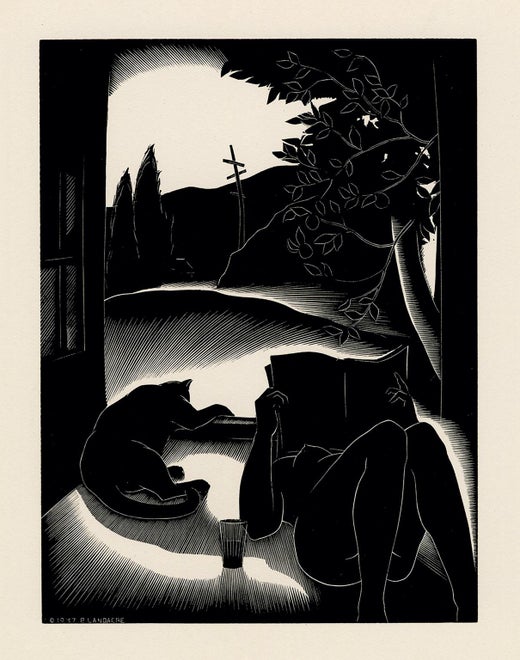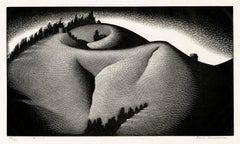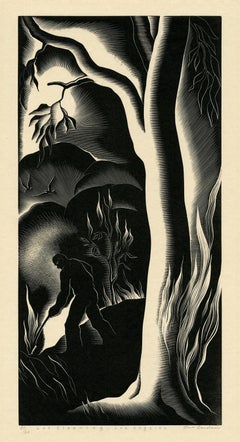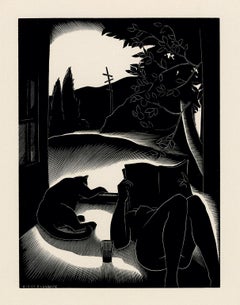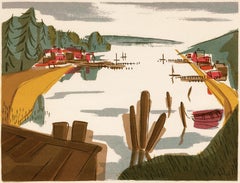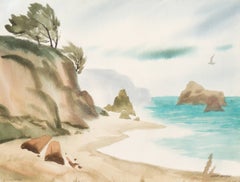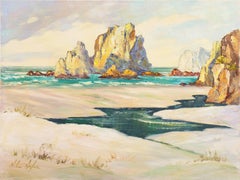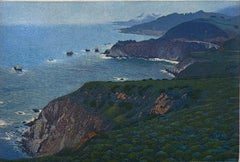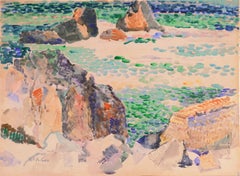Items Similar to 'Laguna Cove' — American Modernism, California
Want more images or videos?
Request additional images or videos from the seller
1 of 3
Paul Landacre'Laguna Cove' — American Modernism, California1936
1936
$3,800
£2,867.76
€3,283.15
CA$5,359.26
A$5,883.80
CHF 3,069.59
MX$71,202.16
NOK 38,472.55
SEK 36,251.26
DKK 24,507.81
About the Item
Paul Landacre, 'Laguna Cove', wood engraving, 1935; edition 60 (16 printed), 2nd edition 150 (6 printed), Woodcut Society 200, Wien 247. Signed and titled in pencil. A brilliant, black impression, on cream wove Japan, with full margins (3/4 to 1 3/4 inches), in excellent condition. Archivally matted to museum standards, unframed.
This impression is from the edition published for the Twentieth Presentation Print of the Woodcut Society, 1941. Printed by Torch Press, Cedar Rapids.
Literature: Reproduced in 'James Swann: In Quest of a Printmaker', Czestochowski, 1990.
Awards: Purchase Prize, Library of Congress, 1942.
Collections: Brooklyn Museum, College of Wooster Art Museum, de Young and Legion of Honor museums of San Francisco, National Gallery of Art, Library of Congress (purchase, Pennell Fund), The Huntington Art Museum, Yale University Art Gallery,
ABOUT THE ARTIST
Paul Landacre’s renowned wood engravings are distinguished by their flawless craftsmanship and impeccable design. His elegant compositions, at once highly modernist and intimately personal, inspired both Rockwell Kent and Carl Zigrosser to name him the pre-eminent American wood engraver of the 20th century. His work garnered numerous printmaking awards—among them, his illustrated books of poems for Ward Ritchie and Alexander Dumas 'A Gil Blas in California', and his first solo book, 'California Hills and Other Wood Engravings', winner of the 'Fifty Books of the Year' (1931), American Institute of Graphic Arts. In 1946 he was elected to the National Academy of Design and in 1947 the Smithsonian celebrated Landacre at midcareer by giving him a solo exhibition which was curated by the influential painter, printmaker, and scholar Jacob Kainen.
Landacre's work is represented in the collections of the Boston Museum of Fine Arts, Brooklyn Museum, Harvard Art Museums, Library of Congress, Los Angeles County Museum of Art, Los Angeles Public Library, Museum of Modern Art, Oakland Museum of California, New York Public Library, Philadelphia Museum of Art, Seattle Art Museum, Smithsonian American Art Museum, and the Whitney Museum of American Art, among many other public collections.
- Creator:Paul Landacre (1893-1963, American)
- Creation Year:1936
- Dimensions:Height: 5.25 in (13.34 cm)Width: 7.13 in (18.12 cm)
- Medium:
- Movement & Style:
- Period:
- Condition:
- Gallery Location:Myrtle Beach, SC
- Reference Number:Seller: 1040111stDibs: LU53237883072
Paul Landacre
Paul Landacre was an illustrator who specialized in wood engravings of naturalistic images executed in a sparse, rhythmic, linear style. Born in Columbus, Ohio, he was an athlete as a youth. During his sophomore year at Ohio State University, he contracted a life-threatening illness that left him partially disabled. During this same year he also enrolled in a drawing class. After a long recuperation, Landacre moved with his family to California. In order to increase his physical strength he took long walks in the nearby rural areas, and on these walks, drew in his sketchbook. By 1918 he found a job as a commercial illustrator. In 1923 he enrolled at the Otis Art Institute, where he studied all types of media, including wood engraving. Landacre's artistic reputation began to emerge in the early 1930s with the publication of his book California Hills and other Wood Engravings and his first one-person exhibition in Los Angeles. He received many commissions for book illustrations; since he worked in a careful, deliberate manner, his large projects required years to complete. For thirty-one years the artist maintained a hand press in his home, allowing him to have total control over the printing of his designs. In 1939 he was made an associate of the National Academy of Design. The remainder of Landacre's professional career was balanced between teaching and illustrating books. Two examples from the National Gallery's permanent collection demonstrate the range of Landacre's work. His engraving, Smoke Tree, evokes the nearby desert scenery that the artist knew. The sharp, angular canyons of the mountain contrast with the delicate, small-leafed tree in the foreground. Some Ingredients is a still life composition that displays the same strength of line, forceful contrasts, and textures seen in his landscapes. [This is an excerpt from the interactive companion program to the videodisc American Art from the National Gallery of Art. Produced by the Department of Education Resources, this teaching resource is one of the Gallery's free-loan educational programs.]
About the Seller
5.0
Recognized Seller
These prestigious sellers are industry leaders and represent the highest echelon for item quality and design.
Platinum Seller
Premium sellers with a 4.7+ rating and 24-hour response times
Established in 1995
1stDibs seller since 2016
321 sales on 1stDibs
Typical response time: 1 hour
Associations
International Fine Print Dealers Association
- ShippingRetrieving quote...Shipping from: Myrtle Beach, SC
- Return Policy
Authenticity Guarantee
In the unlikely event there’s an issue with an item’s authenticity, contact us within 1 year for a full refund. DetailsMoney-Back Guarantee
If your item is not as described, is damaged in transit, or does not arrive, contact us within 7 days for a full refund. Details24-Hour Cancellation
You have a 24-hour grace period in which to reconsider your purchase, with no questions asked.Vetted Professional Sellers
Our world-class sellers must adhere to strict standards for service and quality, maintaining the integrity of our listings.Price-Match Guarantee
If you find that a seller listed the same item for a lower price elsewhere, we’ll match it.Trusted Global Delivery
Our best-in-class carrier network provides specialized shipping options worldwide, including custom delivery.More From This Seller
View All'Hill' — American Modernism, California
By Paul Landacre
Located in Myrtle Beach, SC
Paul Landacre, 'Hill', wood engraving, 1936, edition 60 (only 54 printed); only 2 impressions printed in a second edition of 150. Signed, titled, and numbered '49/60' in pencil. Wien...
Category
1930s American Modern Landscape Prints
Materials
Woodcut
'Lot Cleaning, Los Angeles' — 1930s Modernism
By Paul Landacre
Located in Myrtle Beach, SC
'Lot Cleaning, Los Angeles', wood engraving, edition 60, Zeitlin & Ver Brugge 69. Signed, titled and numbered '51/60' in pencil. A brilliant, black impression, on Kitakata Japan pape...
Category
1930s American Modern Figurative Prints
Materials
Woodcut
'Sultry Day' — American Modernism
By Paul Landacre
Located in Myrtle Beach, SC
Paul Landacre 'Sultry Day', wood engraving, 1935. Edition 60, 1935; second edition of 150 (only 7 impressions printed); third edition 200, American Artists Group, 1937. Wien 170. Sig...
Category
1930s American Modern Figurative Prints
Materials
Woodcut
'River View' — Mid-Century American Modernism
By Edward August Landon
Located in Myrtle Beach, SC
Edward Landon 'River View, color serigraph, 1942, edition 50, Ryan 159. Signed in pencil in the image, lower right. Titled, dated, and annotated '9 COLORS – 50 PRINTS' in the screen,...
Category
1940s American Modern Abstract Prints
Materials
Screen
'Rockport Harbor' — Mid-Century Modernism
By Louis Wolchonok
Located in Myrtle Beach, SC
Louis Wolchonok, 'Rockport Harbor', gouache, c. 1950. Signed in ink, lower right. A fine, modernist work, with fresh colors, on cream wove drawing pape...
Category
1950s American Modern Abstract Drawings and Watercolors
Materials
Gouache
'Tropical Wash Day' — Mid-Century Modernism
Located in Myrtle Beach, SC
'Tropical Wash Day', aquatint, edition 100, 1946. Signed in pencil. Signed and dated in the plate, lower left. A superb, richly-inked impression, on heavy cream wove paper, with full...
Category
1940s American Modern Figurative Prints
Materials
Aquatint
You May Also Like
'Hidden Cove, Big Sur', California, Society of Western Artists, Who Was Who
By Nat Levy
Located in Santa Cruz, CA
A substantial, mid-century Impressionist-style watercolor on Arches paper showing a misty view of turquoise waves rolling into a secluded rocky cove in Big Sur, California
Signed lo...
Category
1950s Landscape Drawings and Watercolors
Materials
Watercolor, Laid Paper
'California Cove, Orange County', Laguna Beach Art Association, Chouinard
By Helen Hafer
Located in Santa Cruz, CA
Signed lower left, 'Helen Hafer' (American, 1913-2003) and with artist label verso.
This listed California artist, Hafer studied at the Chouinard Institute in Los Angeles, and priv...
Category
1960s Post-Impressionist Landscape Paintings
Materials
Canvas, Oil
Pacific Coast Highway, by Stephen McMillan
By Stephen McMillan
Located in Palm Springs, CA
The Pacific Coast Highway winding up the iconic Big Sur Coast in California. In the distance is Bixby Bridge.
Signed, titled and nubmered by the artist.
Medium: etching and aquatin...
Category
2010s Contemporary Landscape Prints
Materials
Etching, Aquatint
'California Coast', Corcoran, Bohemian Club, MoMA, AIC, CSFA, LACMA, SFAA
Located in Santa Cruz, CA
Estate stamped, lower left, 'Wm. A. Gaw' for William Alexander Gaw (American, 1891-1973) and painted circa 1935.
William Alexander Gaw was born in San Francisco to an artistic famil...
Category
1930s Landscape Drawings and Watercolors
Materials
Watercolor, Gouache, Postcard
"The Cove" - Contemporary Vibrant Geometric Coastal Seascape with Jagged Clouds
Located in Carmel, CA
Robert Glick (American, born 1950)
"The Cove" 2024
Acrylic paint, Canvas, Stretcher bars
The artist signed the bottom right and the back of the painting.
This painting by Robert Gli...
Category
2010s Hard-Edge Landscape Paintings
Materials
Canvas, Acrylic, Stretcher Bars
Mid Century California Landscape -- Carmel Cove
By James Riley Stevenson
Located in Soquel, CA
Vibrant landscape painting of a cove in Carmel Beach looking towards Pebble Beach by James Riley Stevenson (American, 1911-1990). Signed lower left "James Stevenson." Unframed. Image...
Category
Mid-20th Century American Impressionist Landscape Paintings
Materials
Linen, Oil
